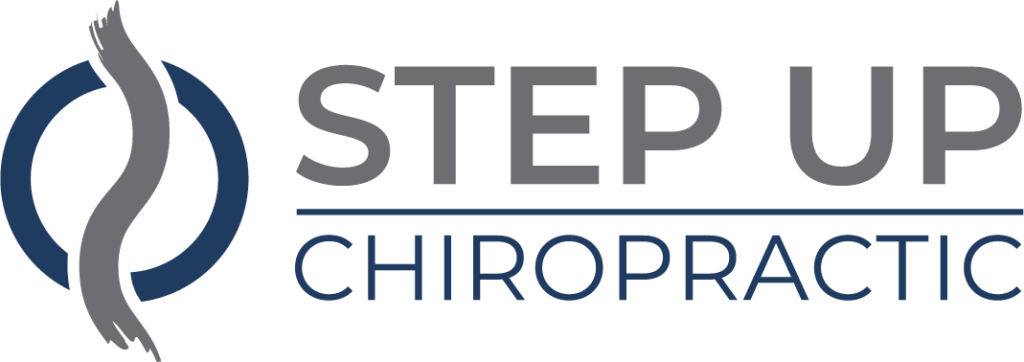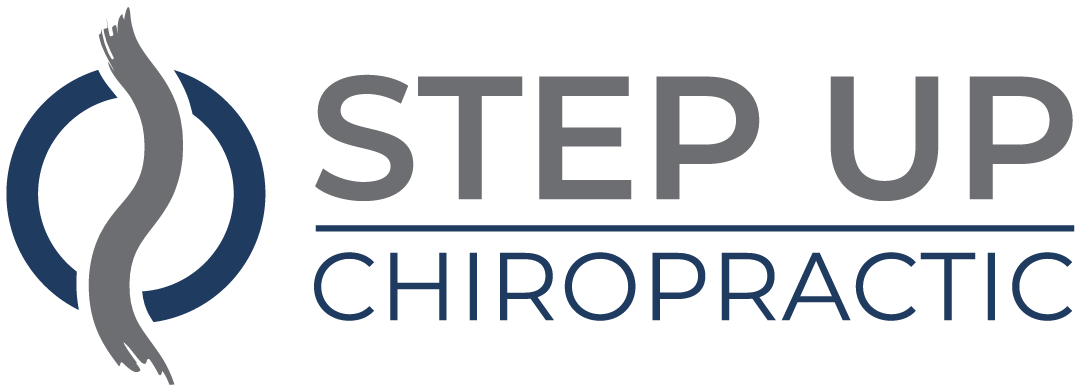If you're looking to enhance your flexibility, it's crucial to adopt a balanced approach that incorporates various techniques. You can start by integrating daily stretching routines and exploring practices like yoga and Pilates to improve your overall range of motion. However, there's more to it than just stretches—certain methods can greatly amplify your progress. Curious about the specific strategies that can help you achieve lasting results? Let's explore these authentic ways together.
Incorporate Daily Stretching
Incorporating daily stretching into your routine can greatly enhance your flexibility and overall well-being. You don't need to dedicate hours each day; just a few minutes can make a significant difference. Try to set aside time in the morning or evening when you can focus on your body without distractions.
Start with basic stretches, targeting major muscle groups like your hamstrings, quadriceps, and shoulders. For example, a simple forward bend can help release tension in your back and legs. Hold each stretch for about 15 to 30 seconds, ensuring you breathe deeply and relax into the position. You'll notice that the more consistent you are, the easier it becomes to deepen your stretches over time.
Make stretching a habit by incorporating it into other activities. If you're watching TV, get up during commercial breaks to stretch your arms and legs. Even a few minutes of stretching between tasks at work can relieve tension and boost your energy levels.
Listening to your body is essential. Don't push yourself too hard; you should feel a gentle pull, not pain. If you experience discomfort, ease off and modify the stretch. Consider keeping a stretching log to track your progress; it can motivate you to stay committed.
Lastly, remember that flexibility enhances not just your physical capabilities but also your mental clarity. With regular stretching, you'll feel more centered and ready to tackle daily challenges.
Practice Yoga Regularly
Yoga's transformative practice offers an excellent way to boost your flexibility while also promoting mindfulness and relaxation. By committing to a regular yoga routine, you'll find not only an improvement in your physical flexibility but also a sense of mental clarity and emotional balance.
Each session serves as a time to reconnect with your body and mind, allowing you to release tension and embrace the present moment.
As you immerse yourself in yoga, you might experience:
- Increased range of motion: Enjoy the freedom of movement in your daily activities.
- Enhanced relaxation: Feel the stress melt away as you focus on your breath and body.
- Improved posture: Stand tall and confident with better alignment.
- Boosted energy levels: Experience renewed energy and an uplifted spirit.
- Greater self-awareness: Tune into your body's signals and cultivate a deeper understanding of your needs.
To get started, find a style that resonates with you, whether it's Hatha, Vinyasa, or Yin yoga. Attend classes or follow online tutorials that guide you through poses and sequences.
Aim for at least two to three sessions a week, gradually increasing your practice as you become more comfortable. Remember, it's not about mastering the poses but enjoying the journey of growth and discovery.
With each practice, you'll not only become more flexible but also cultivate a sense of inner peace that enriches your life. So roll out your mat and embrace the transformative power of yoga!
Use Foam Rollers
Foam rollers can be a game-changer for improving your flexibility. They help relieve muscle tension and enhance recovery, making your stretching routine more effective.
Let's explore some techniques for using foam rollers and how to seamlessly incorporate them into your workouts.
Benefits of Foam Rolling
Rolling out tension with a foam roller can greatly enhance your flexibility and overall muscle function. By incorporating foam rolling into your routine, you'll experience various benefits that contribute to improved performance and recovery.
Here are some key advantages:
- Reduced Muscle Soreness: Say goodbye to that post-workout stiffness and hello to quicker recovery times.
- Improved Blood Flow: Increased circulation helps deliver oxygen and nutrients to your muscles, promoting faster healing.
- Enhanced Range of Motion: Foam rolling breaks up muscle adhesions, allowing for greater flexibility in your movements.
- Stress Relief: Rolling can serve as a form of self-massage, helping to alleviate built-up tension and stress.
- Injury Prevention: By maintaining muscle elasticity and reducing tightness, you lower the risk of strains and injuries.
Integrating foam rolling into your flexibility routine not only helps with immediate relief but also leads to long-term benefits.
You'll feel more agile, perform better in your activities, and enjoy a greater sense of well-being.
Techniques for Effective Rolling
To maximize the benefits of foam rolling, it's important to employ effective techniques that can enhance your experience and results.
First, start by selecting the right foam roller for your needs; a firmer roller can target deeper muscle layers, while a softer one is suitable for beginners.
When rolling, apply slow, controlled movements. Begin with one muscle group at a time, positioning the roller under the target area. Use your body weight to apply pressure, but avoid rolling over bones or joints. Instead, focus on tight spots, spending 20 to 30 seconds on each sensitive area.
Breathe deeply to help relax your muscles and enhance the release of tension. You can also experiment with different angles to target various muscle fibers effectively.
If you encounter a particularly tight spot, pause and apply gentle pressure for about 30 seconds. This technique, known as static rolling, can help release knots more efficiently.
Lastly, maintain a steady rhythm as you roll, ensuring you don't rush through the process.
Incorporating Into Routine
Integrating foam rollers into your routine can greatly enhance your flexibility and recovery. By incorporating this simple tool, you'll not only improve your muscle performance but also reduce soreness and tension.
Here's how you can seamlessly add foam rolling into your daily life:
- Start your day with a quick foam rolling session to wake up your muscles and improve blood flow.
- Incorporate it into your warm-up before workouts to prepare your muscles, making your exercise routine more effective.
- Use it post-workout to release tightness and speed up recovery, allowing you to bounce back quicker.
- Schedule time on rest days for rolling, focusing on areas that need extra attention, helping you maintain flexibility.
- Make it a relaxing ritual in the evening, using it to unwind and relieve stress after a long day.
Engage in Dynamic Warm-Ups
Before diving into your workout, engaging in dynamic warm-ups is essential for enhancing flexibility and preventing injury. These movements help prepare your muscles, joints, and nervous system for the physical activity ahead. Dynamic warm-ups involve active movements that stretch your muscles through their full range of motion, rather than holding a stretch in one position.
Start with gentle movements like arm circles and leg swings to loosen up. Gradually increase the intensity with exercises like high knees, butt kicks, and walking lunges. These activities elevate your heart rate and increase blood flow to your muscles, making them more pliable and responsive. Aim for approximately 5 to 10 minutes of dynamic warm-ups before your main workout.
Incorporating sport-specific movements can also enhance the effectiveness of your warm-up. For instance, if you're planning to run, include some lateral shuffles or skips to mimic the actions you'll perform. This not only warms up your muscles but also activates the specific muscle groups you'll be using.
Try Static Stretching Techniques
After completing your dynamic warm-ups, it's time to focus on static stretching techniques to further enhance your flexibility. Static stretching is vital for improving your range of motion and can help prevent injuries.
It's important to hold each stretch for at least 15-30 seconds, allowing your muscles to relax and elongate effectively.
Here are some effective static stretching techniques you can try:
- Hamstring Stretch: Bend at the waist and reach for your toes, feeling the stretch along the back of your legs.
- Quadriceps Stretch: Stand on one leg, pulling your opposite foot towards your glutes, ensuring a deep stretch in the front of your thigh.
- Shoulder Stretch: Bring one arm across your body and gently pull on it with the opposite arm to stretch your shoulder.
- Hip Flexor Stretch: Kneel on one knee and push your hips forward, feeling the stretch in the front of your hip.
- Cat-Cow Stretch: On all fours, alternate between arching and rounding your back to promote spinal flexibility.
Incorporating these stretches into your routine can boost your overall flexibility and well-being.
Remember to listen to your body; don't push yourself to the point of pain. Enjoy the process, and you'll soon notice improvements in your flexibility, making other activities easier and more enjoyable.
Focus on Breathing Exercises
Breathing exercises play an essential role in enhancing flexibility and overall physical performance. When you focus on your breath, you create a deeper connection between your mind and body, allowing for improved muscle relaxation and increased range of motion. By incorporating specific breathing techniques into your routine, you can maximize the benefits of your stretching exercises.
Start by practicing diaphragmatic breathing, where you inhale deeply through your nose, allowing your belly to expand, and then exhale slowly through your mouth. This method encourages relaxation and helps release tension in your muscles. As you breathe, visualize the areas in your body that you want to stretch, guiding your breath toward those muscles. This mental focus can enhance your stretching experience and promote better outcomes.
Another effective technique is the 4-7-8 breathing method. Inhale for a count of four, hold your breath for a count of seven, and exhale for a count of eight. This exercise calms your nervous system and prepares your body for deeper stretches. It's also an excellent way to relieve stress before your flexibility routine.
Integrating these breathing exercises into your warm-up or cooldown can greatly improve your flexibility. Remember to maintain a steady rhythm with your breath as you stretch, allowing each exhale to help you sink deeper into the pose.
Participate in Dance Classes
Participating in dance classes can considerably boost your flexibility while making the process enjoyable and social. When you step into a dance studio, you're not just learning steps; you're opening the door to a world of movement that encourages your body to stretch and adapt.
Whether it's ballet, hip-hop, or contemporary, each style offers unique benefits that enhance your flexibility.
As you engage in the rhythm and flow of dance, you'll experience a variety of emotions and physical sensations, such as:
- Elation: The joy of moving freely and expressing yourself.
- Empowerment: Gaining strength and confidence through each dance routine.
- Connection: Building friendships with fellow dancers who share your passion.
- Creativity: Discovering new ways to move and interpret music.
- Achievement: Celebrating milestones as you master new techniques and become more flexible.
Dance classes also promote body awareness, which helps you understand your limits and encourages you to push them.
You'll notice how your muscles respond to different movements, ultimately leading to greater flexibility over time. Plus, the supportive environment in classes keeps you motivated, making it easier to stick with your flexibility goals.
Take Up Pilates
Embracing Pilates can greatly enhance your flexibility, as it focuses on controlled movements that lengthen your muscles and improve your range of motion. When you practice Pilates, you engage in exercises that target both strength and flexibility, providing a balanced approach to your fitness routine. Each movement is performed with precision, allowing you to deepen your stretches and gain better control over your body.
You'll find that Pilates encourages you to focus on your breath, which helps you relax and allows your muscles to lengthen during each exercise. This connection between breath and movement is essential for achieving greater flexibility. As you progress, you'll notice how your body begins to open up, making it easier to perform daily activities and other physical pursuits.
Incorporating Pilates into your routine can be done in various ways, such as joining a class, following online workouts, or using Pilates equipment like the reformer. Regardless of the method you choose, consistency is key. Aim for at least two to three sessions a week to see significant improvements in your flexibility.
Don't be discouraged if you don't see immediate results; flexibility takes time to develop. Celebrate your progress, even if it's small, and enjoy the journey of becoming more in tune with your body.
Stay Hydrated
To boost your flexibility, don't overlook the importance of staying hydrated. Water plays an essential role in keeping your muscles and joints functioning at their best. When you're well-hydrated, your body can better perform the stretches and movements necessary to enhance your flexibility.
Dehydration can lead to tight muscles and decreased range of motion, which can hinder your progress. So, make it a priority to sip on water throughout the day.
Here are some key reasons why hydration is important for your flexibility:
- Muscle Elasticity: Staying hydrated keeps your muscles pliable and responsive, making it easier to stretch them effectively.
- Joint Lubrication: Water helps in lubricating your joints, allowing for smoother movements and reducing the risk of injury.
- Nutrient Transport: Proper hydration aids in the delivery of essential nutrients to your muscles, promoting better recovery after workouts.
- Temperature Regulation: Staying cool during your flexibility routines helps maintain performance, and hydration plays a significant role in regulating body temperature.
- Mood and Motivation: Dehydration can lead to fatigue and irritability, which may demotivate you from sticking to your flexibility routine.
Make sure to drink water before, during, and after your workouts. Listen to your body's signals, and keep a water bottle handy.
Listen to Your Body
Listening to your body is essential when it comes to improving flexibility. Your body often sends signals that can guide your stretching routine, helping you know when to push yourself and when to ease off. Pay attention to how your muscles feel during each stretch. If you feel sharp pain, stop immediately; it's your body's way of telling you that something's not right. On the other hand, a mild discomfort indicates that you're stretching effectively.
Before you start any flexibility routine, take a moment to assess your current state. Are you feeling tight or fatigued? Adjust your stretching intensity accordingly. It's vital to recognize that flexibility varies from day to day due to factors like stress, sleep, and hydration. Don't let frustration dictate your practice; instead, embrace the variations.
As you progress, note your body's responses to different stretches. If a certain pose feels particularly good, incorporate it more often. Conversely, if you notice consistent discomfort in a stretch, consider modifying it or replacing it with a gentler alternative.
Incorporating rest days into your routine is just as important. Overworking your muscles can lead to injury and hinder your flexibility goals.
Finally, don't forget the importance of breathing. Deep, controlled breaths can help you relax into your stretches, allowing for greater gains. By tuning in to your body, you can cultivate a more effective and enjoyable flexibility practice.
Conclusion
To truly enhance your flexibility, remember to stay consistent and listen to your body. Incorporate daily stretching, yoga, and foam rolling into your routine while trying out dynamic warm-ups and dance classes. Pilates can help with alignment, and staying hydrated is essential for muscle elasticity. Embrace the journey and be patient with yourself—flexibility takes time and dedication. By following these tips, you'll find yourself moving with greater ease and grace in no time!




